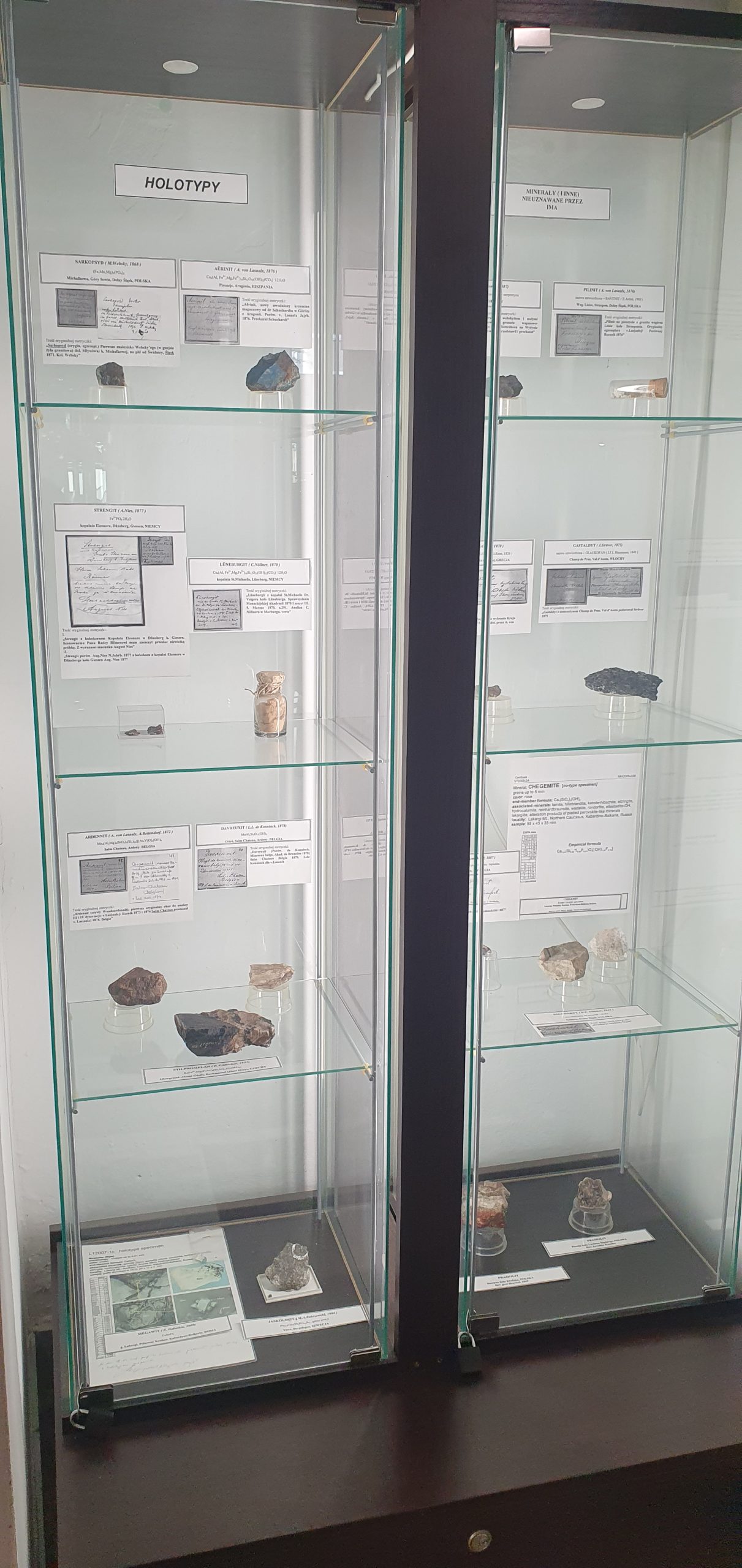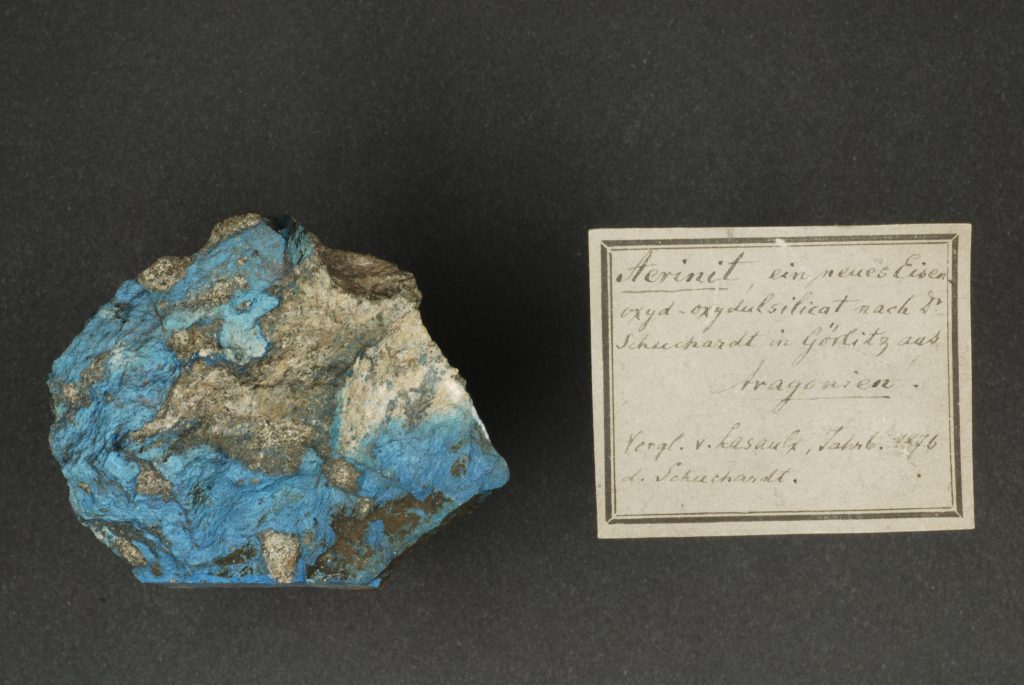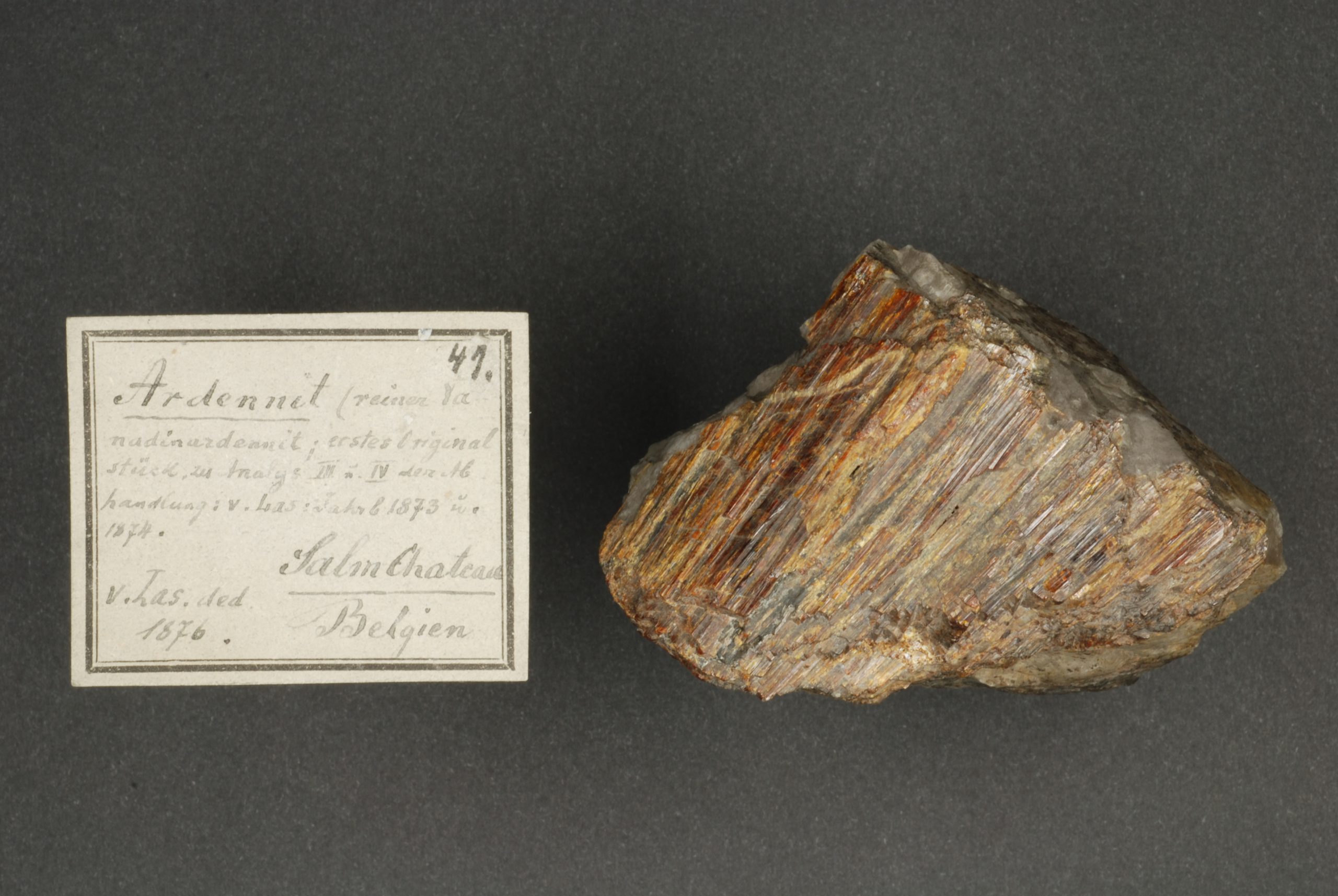
HOLOTYPES
First specimens of newly discovered minerals from the collection of the Mineralogical Museum of the University of Wrocław
ARNOLD von LASAULX (1839-1886) An outstanding geologist and mineralogist. In 1874 he became a professor of mineralogy at the Institute of Geology and Palaeontology at the University of Breslau and remained so until 1880. He was a well-known specialist in the optics of crystals (among other things he invented the so-called Lasaulx lens in polarizing microscopes). The collection of the Mineralogical Museum preserves numerous mineral specimens which he collected. He was the discoverer of aërinite, ardennite, and the IMA-unapproved pilinite (the current name used is bavenite), among others, presented in the exhibition.
Sarkopsyd
MARTIN WEBSKY (1824-1886) According to contemporaries, one of the most outstanding and comprehensive German mineralogists of his time. An excellent chemical analyst, to whom other European researchers (e.g. Nordenskiöld, Blomstrand, Brøgger and others) turned for confirmation of their research. In the collection of the Mineralogical Museum there are still numerous specimens collected and analysed by him. A specimen of the sarkopsid discovered and described by Martin Websky from Michałkowa in the Owl Mountains occupies a special place among them.
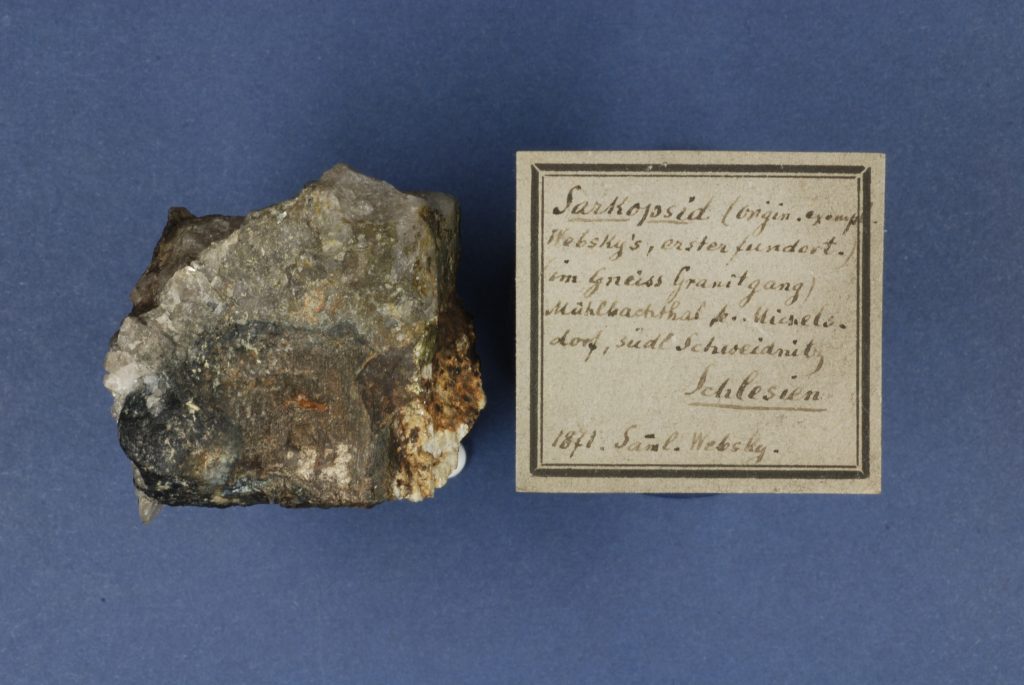
Prasiolit
MICHAŁ SACHANBIŃSKI – Discoverer of natural Prasiolite (together with mgr* Piotr Wróblewski)
Specialist in mineralogy, gemmology and mineral physics. Author and co-author of a very large number of monographs, papers and scientific articles in the broadly understood mineralogical sciences. Educator of many generations of geologists at the University of Wrocław. His popular scientific books, such as “Vademecum zbiecza kamieni szlachetnych i ozdobnych” (Vademecum of Collectors of Precious and Ornamental Stones) or “Kamienie szlachetne i ozdobne Śląska” (Precious and Ornamental Stones of Silesia), contributed to the increase of interest in collecting minerals in Poland. In 1992 an article entitled “Natural prasiolite from Lower Silesia, Poland” was published, in which he described for the first time a natural prasiolite from Suszyna-Mrówieniec near Kłodzko. The research presented in the article concerned an old specimen of “green quartz” donated to the museum by Graf Henckel in 1869.
Alongside this historic specimen, one of the first prasiolites from Płoczki near Lwówek Śląski, donated to the museum by Jarosław Kosałka, is also on display.
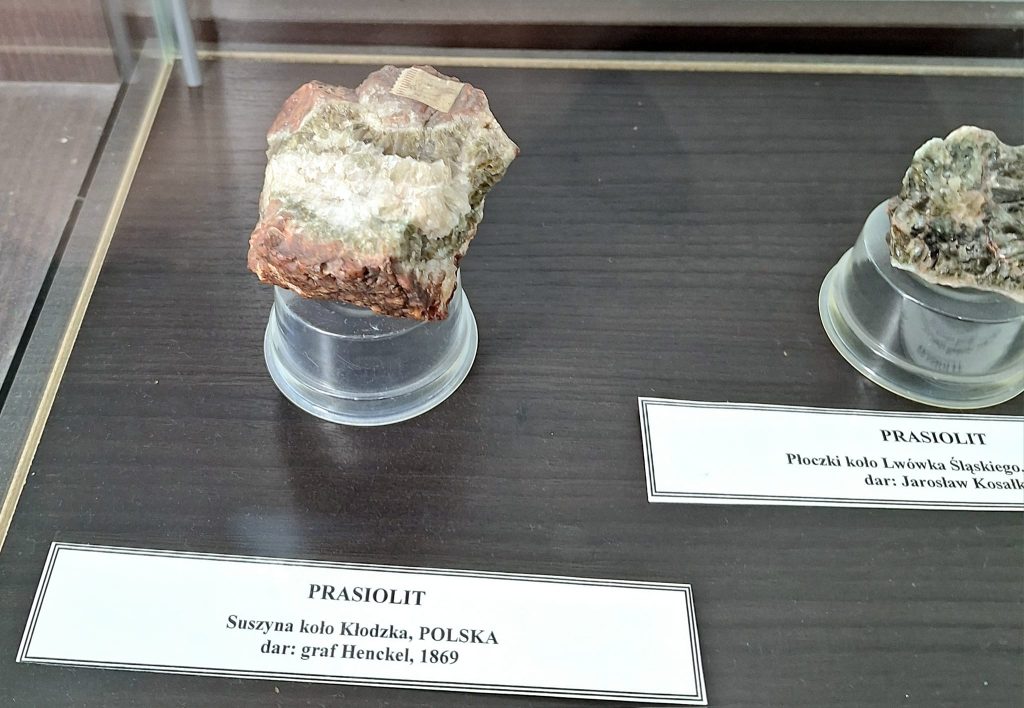
ERNST FRIEDRICH GLOCKER (1793-1858) An employee of the University of Breslau from 1832 to 1855, he was an exceptionally versatile lecturer in various fields of geology. He published a tabular overview of the minerals known at that time, with a careful listing of all synonyms. His greatest achievements were the discovery of nine new minerals and the naming of seven more that still function today. In the collection of the Mineralogical Museum, only the stilpnomelan, presented in the exhibition, and saccharite, not recognised by the IMA, survived as a result of the war.
HOLOTYPE
a single specimen (selected by the researcher) from which the data for the initial description was obtained. If fragments of this specimen have been sent to another museum for preservation, the researcher should identify each as “part of the holotype”. Historical specimens of minerals as suggested by the IMA (International Mineralogical Association) should have a historical metric or description.
COTYPES
specimens (designated by the researcher) from which quantitative data were obtained for the original description. Specimens examined only visually should not be considered as cotypes.
Compiled by Jacek Bogdański
